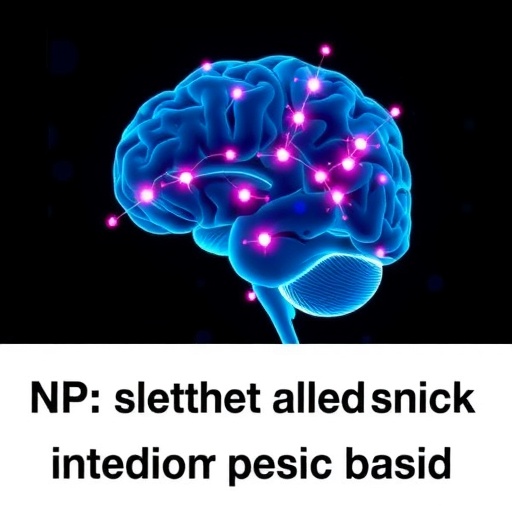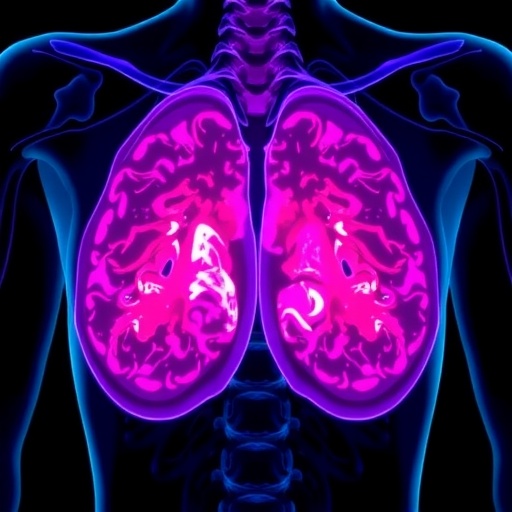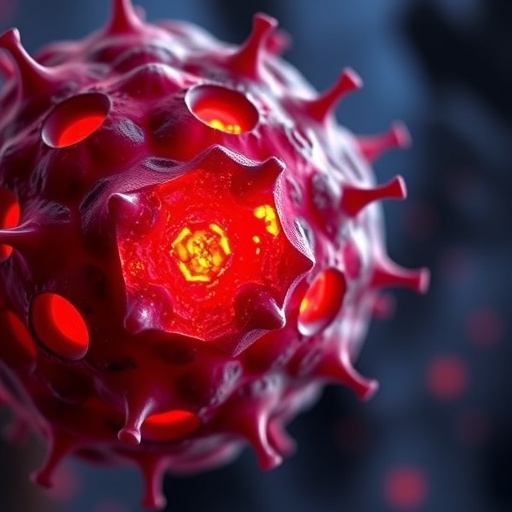In a groundbreaking study published in BMC Cancer, researchers have unveiled promising results regarding the safety and feasibility of administering multiple intrathecal injections of allogeneic natural killer (NK) cells to pediatric patients suffering from refractory or recurrent brain tumors. Pediatric gliomas represent a formidable challenge in neuro-oncology due to their rarity and high incidence of recurrence, often leading to dismal prognoses. This phase I clinical trial pioneers an innovative therapeutic approach that harnesses the immune system’s innate capacity to combat malignant cells within the central nervous system.
The study meticulously isolated NK cells from healthy unrelated donors using positive selection techniques targeting the CD56 surface marker. These cells, known for their potent cytotoxicity against tumor cells without prior sensitization, were administered intrathecally – directly into the cerebrospinal fluid – allowing for targeted delivery to the tumor microenvironment. Over the course of the trial, nine pediatric patients were enrolled, each receiving weekly doses of up to 5 × 10^7 NK cells, with the possibility of up to ten injections per patient. The researchers aimed not only to evaluate safety but also to observe initial signals of therapeutic efficacy and the impact on tumor progression.
In terms of treatment outcomes, the study observed a heterogeneous response among participants. After 18 months of follow-up, five patients from the intervention group remained alive. Among these survivors, three exhibited stable disease, one experienced progressive disease, and notably, one patient achieved a partial response marked by a measurable reduction in tumor size. Such responses highlight the complex interplay between the administered NK cells and the hostile tumor microenvironment, suggesting that while NK cell infusions can exert anti-tumor activity, variability in individual tumor biology and immune evasion mechanisms may influence therapeutic success.
The retrospective control group, consisting of six patients who received conventional therapies, provided a stark contrast. Most of these patients encountered disease progression and leptomeningeal spread, with four succumbing to their illness. Only one control patient showed radiological evidence of complete response. This differential outcome emphasizes the urgent need for novel immunotherapeutic strategies in pediatric gliomas, where conventional treatments often fail to achieve durable remissions.
Intriguingly, cerebrospinal fluid (CSF) analyses revealed immunological shifts post-treatment. There was a notable increase in the percentages of NK and T cells within the CSF, coupled with significant reductions in pro-inflammatory cytokines such as interferon-gamma (IFN-γ) and tumor necrosis factor-alpha (TNF-α). These findings suggest a modulation of the immune milieu in favor of anti-tumoral surveillance, possibly reducing chronic inflammation that can exacerbate tumor growth and damage.
This study is pioneering in demonstrating that repeated intrathecal administration of allogeneic NK cells is technically feasible and safe in a vulnerable pediatric population afflicted with recurrent brain tumors. The direct delivery method bypasses the blood-brain barrier, a notorious obstacle in neuro-oncology therapeutics, thereby improving immune cell accessibility to tumor sites. Moreover, the absence of serious adverse events advocates for the potential scalability of this protocol into larger, randomized controlled trials.
Despite these encouraging results, the authors prudently advocate for caution. The study’s limited sample size, lack of randomization, and heterogeneous responses necessitate further exploration. Longer follow-up periods and inclusion of well-matched control groups will be essential to conclusively determine the efficacy of this immunotherapeutic approach. Future investigations might also explore combinatorial strategies pairing NK cells with other treatments to enhance outcomes.
The immunobiology of NK cells confers distinct advantages as a cancer therapeutic: their ability to recognize and kill transformed cells without prior antigen sensitization minimizes the risk of tumor escape. Moreover, allogeneic NK cell transplantation offers an “off-the-shelf” immunotherapy model, circumventing the complexities associated with patient-specific cell expansions. However, challenges remain in optimizing cell expansion protocols, ensuring persistence of NK cells post-infusion, and overcoming the immunosuppressive tumor microenvironment.
Pediatric brain tumors, especially gliomas, continue to represent one of the most formidable pediatric oncology subtypes due to their aggressive clinical behavior and resistance to standard therapies. Innovations such as intrathecal NK cell therapy herald a new era of immunomodulation, aiming to tip the balance in favor of tumor eradication while preserving neurological function and quality of life.
The trial registration for this study was completed under the Iranian Registry of Clinical Trials (IRCT20170122032121N6), underlining the global collaborative effort in advancing cancer immunotherapy. As immunotherapeutic modalities gain traction, such pioneering clinical trials pave the way for integrated approaches blending cell therapy, molecular targeting, and immune checkpoint modulation in pediatric neuro-oncology.
In conclusion, the study’s findings reaffirm that multiple intrathecal injections of allogeneic NK cells are safe, feasible, and have the potential for therapeutic benefit in children with refractory and recurrent brain tumors. While preliminary, the observed clinical outcomes and immunological changes present a compelling rationale for expanded trials. Ensuring robust trial designs, comprehensive immunophenotyping, and biomarker development will be key in translating these scientific breakthroughs into routine clinical practice.
A new frontier in cancer treatment is emerging where innate immune effector cells are engineered and delivered directly into the central nervous system. This study contributes critical knowledge affirming the safety and practicality of such interventions, which may redefine therapeutic paradigms, offering hope in diseases previously deemed intractable.
As research progresses, hope emerges that harnessing allogeneic NK cells intrathecally could become a standard adjunct or even a primary therapy for pediatric brain tumors. The prospect of enhancing survival and mitigating neurological decline invites renewed optimism from clinicians, patients, and families worldwide.
Looking forward, integration of genetic and molecular profiling with functional immunotherapy could personalize treatment protocols further. Tailoring NK cell therapies to target individual tumor immunogenicity and resistance mechanisms may unlock the full therapeutic potential of this promising approach.
This study signifies a seminal moment in pediatric neuro-oncology, demonstrating that the immune system’s cellular warriors – NK cells – can be safely dispatched into the cerebrospinal space to mount an anti-tumor offensive. Collaborative momentum and continued innovation will be vital to transform these early successes into durable cures.
—
Subject of Research: The safety, feasibility, and preliminary efficacy of multiple intrathecal injections of allogeneic natural killer (NK) cells for treating refractory/recurrent pediatric gliomas.
Article Title: The safety and feasibility of multiple intrathecal injections of allogenic NK cells in pediatrics with refractory/recurrent brain tumors
Article References:
Mahdizadeh, H., Izadpanah, A., Nouri, Y. et al. The safety and feasibility of multiple intrathecal injections of allogenic NK cells in pediatrics with refractory/recurrent brain tumors. BMC Cancer 25, 952 (2025). https://doi.org/10.1186/s12885-025-14314-6
Image Credits: Scienmag.com
DOI: https://doi.org/10.1186/s12885-025-14314-6
Tags: allogeneic natural killer cellscerebrospinal fluid injectionclinical trial safety and efficacycytotoxicity of NK cellsimmunotherapy in neuro-oncologyinnovative cancer treatments for kidsintrathecal injections in childrenNK cell therapy for gliomaspediatric brain tumorspediatric oncology advancementsrefractory brain tumor treatmenttumor microenvironment targeting





